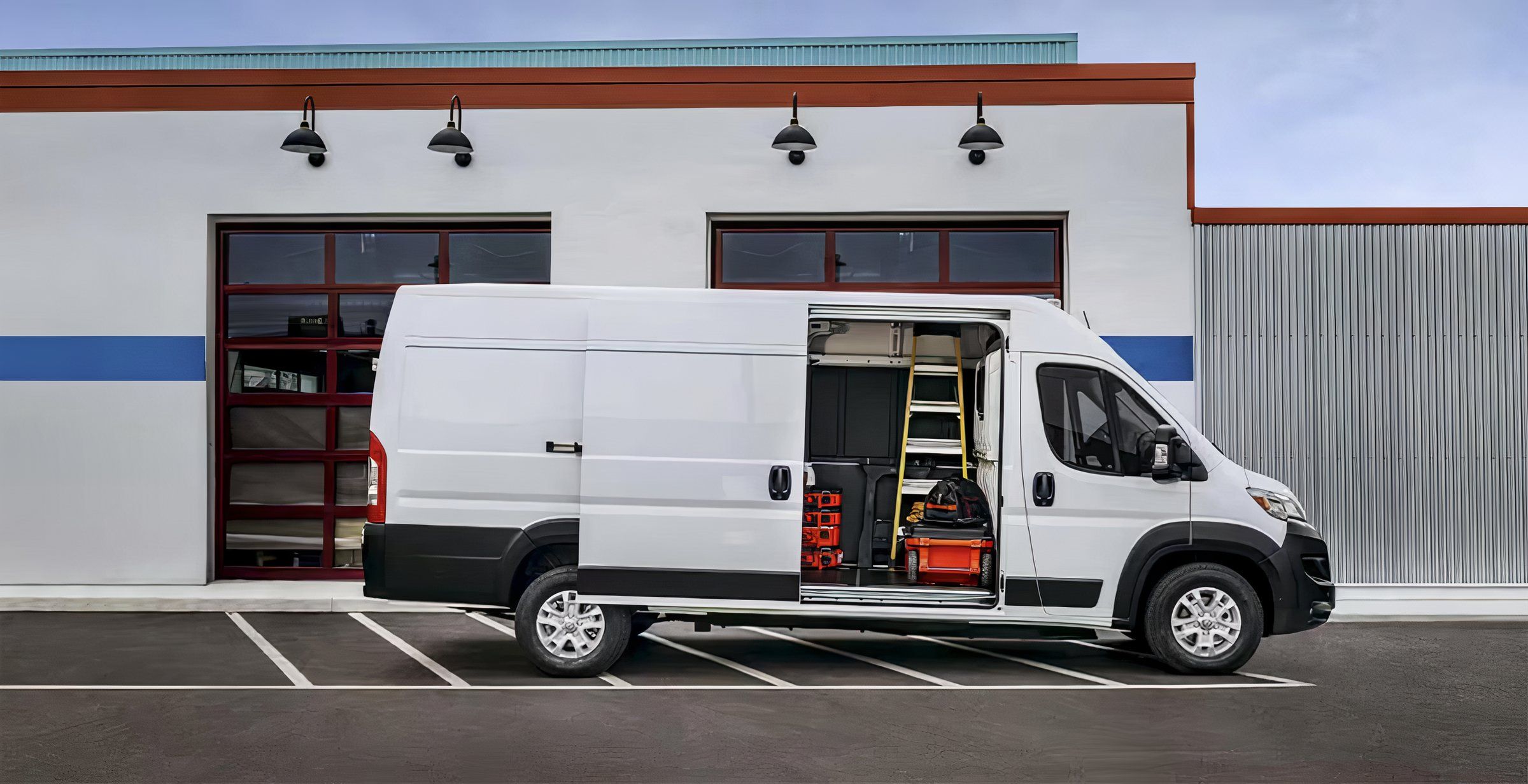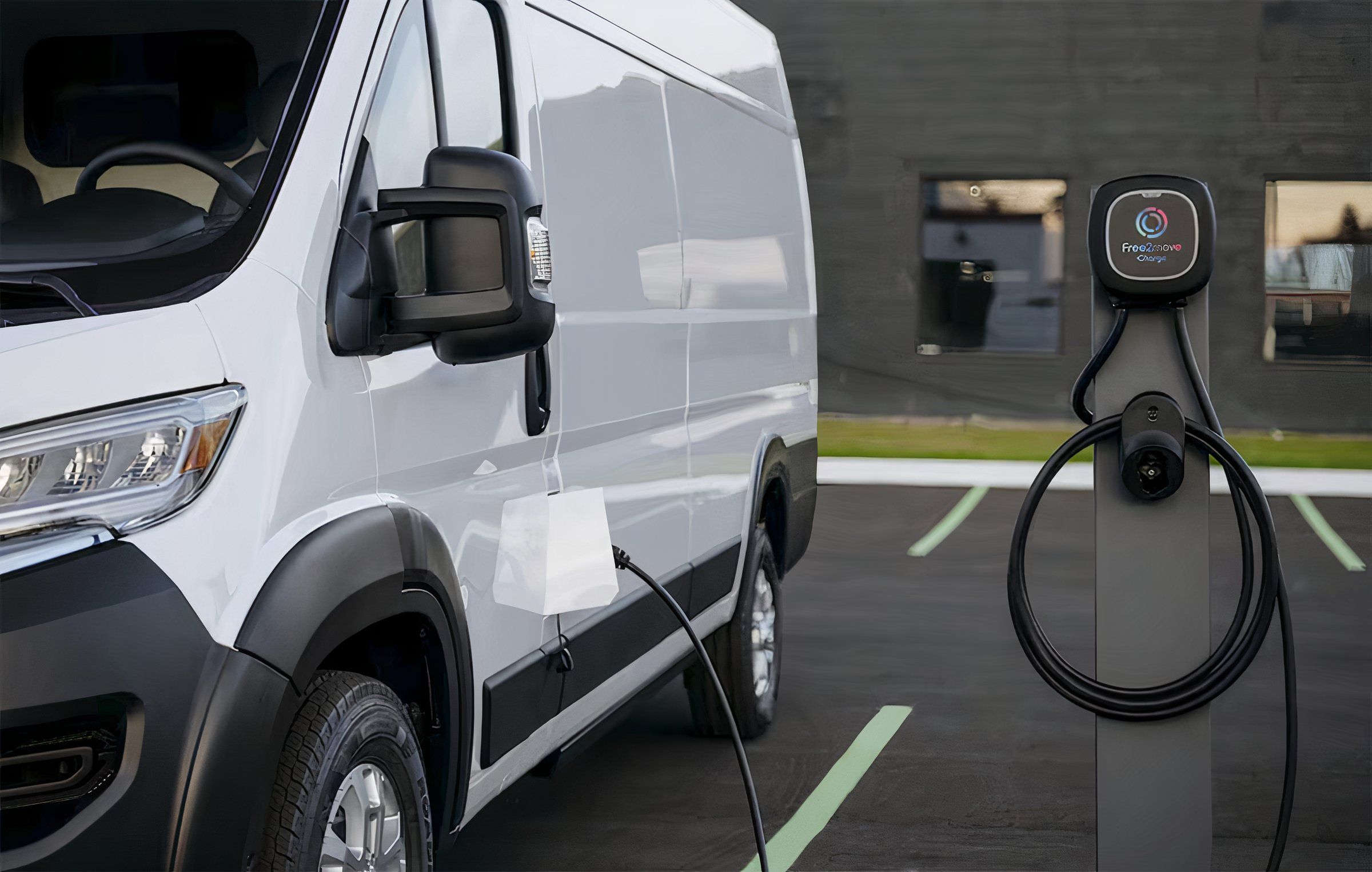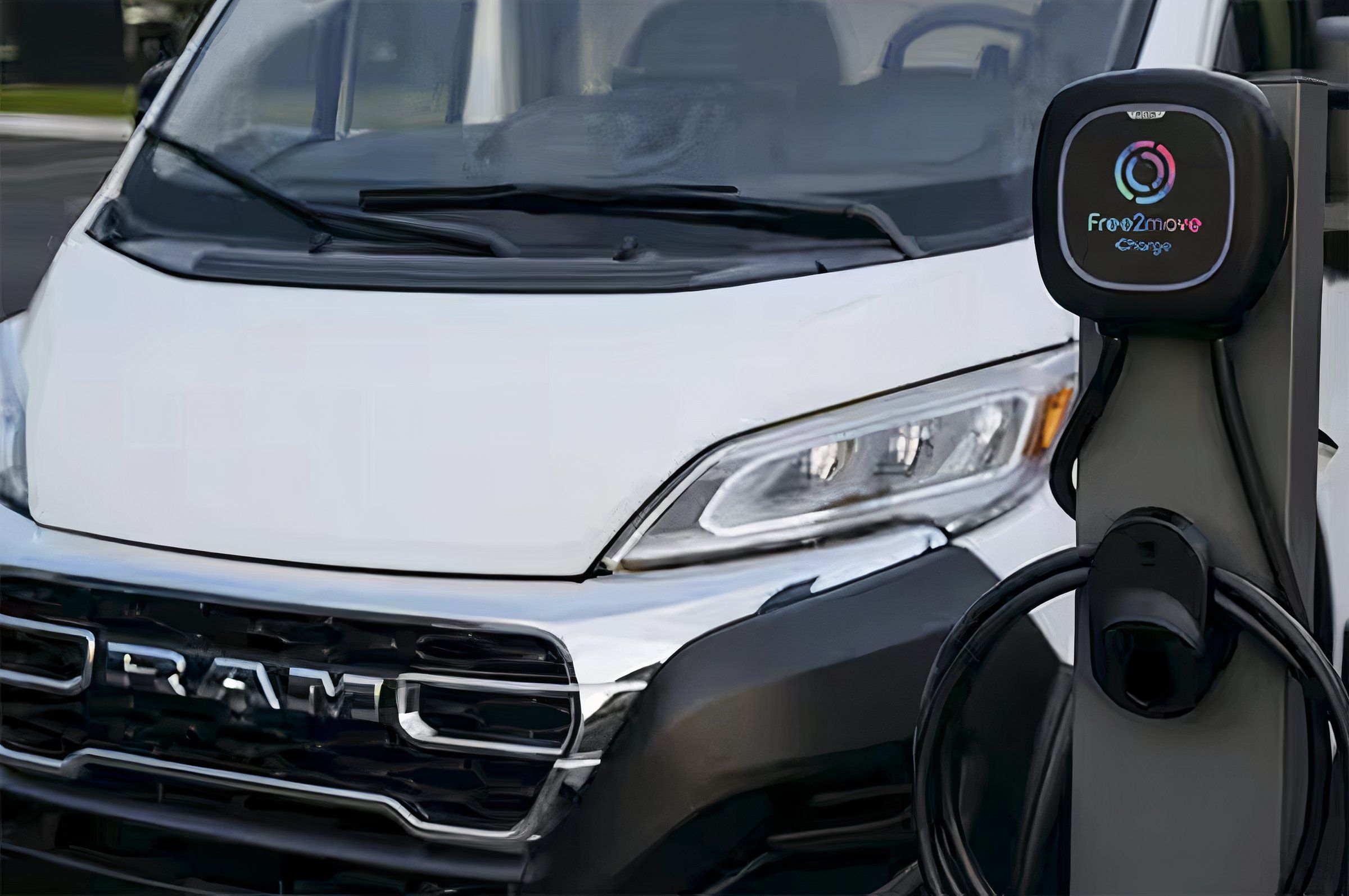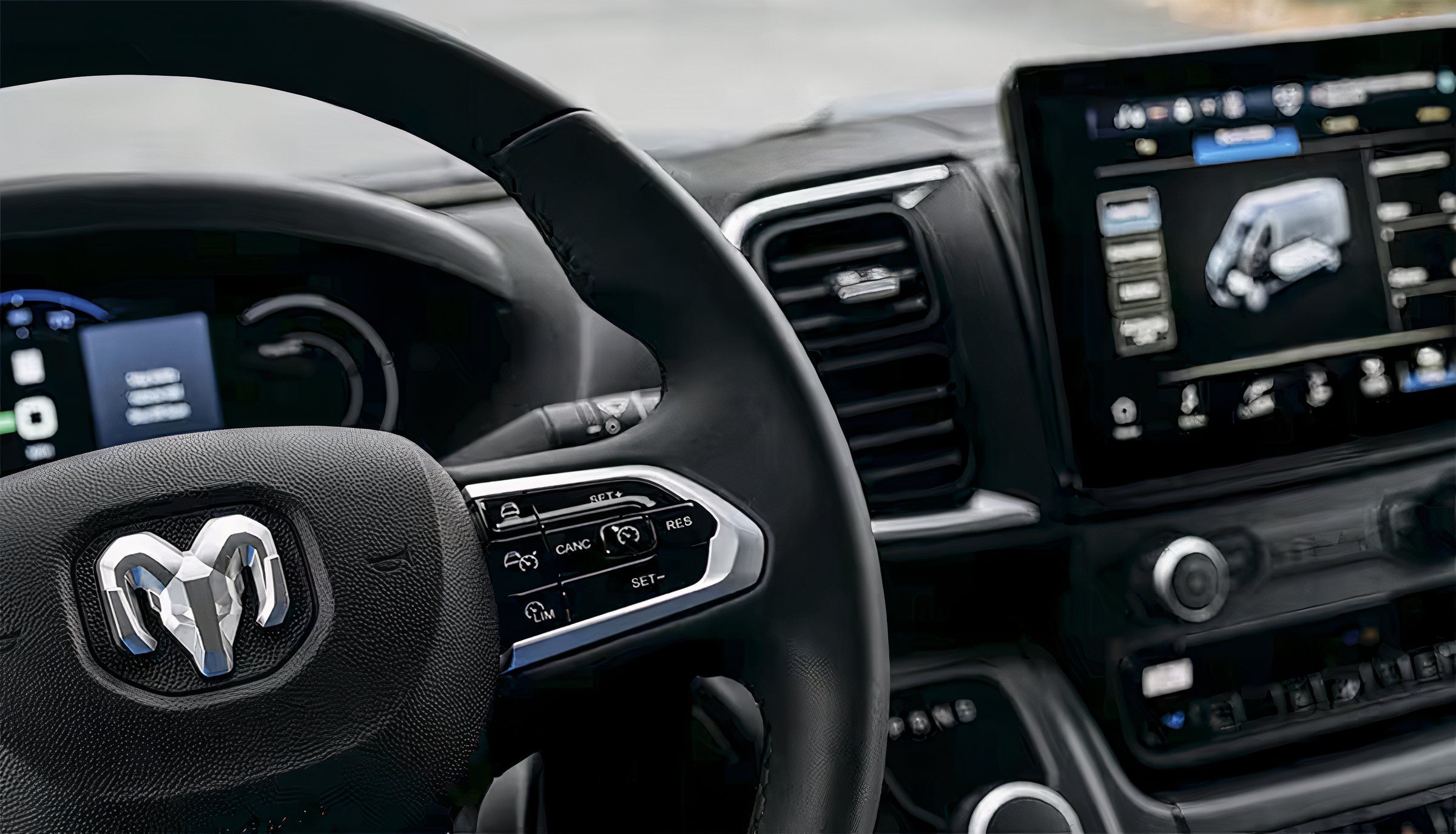Delivery vans, whether from the likes of Amazon, UPS, FedEx or the U.S. Post Office, have become a constant presence in our day-to-day life. What may come as a surprise, however, is that more and more of these vans are going all-electric. And for good reason. The typical “last mile” delivery van will clock around 75 miles a day since they’re most often driven on stop-and-go urban or suburban routes, which makes for the ideal time to regenerate power normally lost during braking and coasting. Add the fact that manufacturers estimate operating costs can run 50% or less when compared to the gas-powered vans, and the shift to electric workhorses starts to make sense.
Ram, the truck arm of Euro-American automaker Stellantis, is the latest to enter the electric van market, taking on players like Ford’s e-Transit and the Mercedes eSprinter. The 2025 Ram ProMaster has a lot going for it – on paper. But to get a sense of how it stands up on the road, DrivingOnRoad took the opportunity to take one for a ride.
What Is The Ram ProMaster EV?
The 2025 Ram ProMaster EV is one of several all-electric models the automaker plans to bring out over the next several years. It will land in showrooms alongside the Ram 1500 REV pickup – as well as the Ramcharger, which is an extended-range version of the pickup set to follow late next year, and it’s improved for 2025.
For the moment, the ProMaster EV is being targeted at commercial users – and there will be plenty of them. Amazon, for example, has ordered 100,000 all-electric Rivian vans and FedEx, UPS and the Post Office are starting to take deliveries, as well. But Ram officials told DrivingOnRoad that retail applications could follow, notably for conversion into camper vans, as is already happening with the Mercedes eSprinter.
In current form, Ram will offer four variants with different heights and lengths. They’re roughly the same size as the Mercedes eSprinter and Ford eTransit offerings, with a maximum interior height of 86 inches and capacity to haul up to 2,030 pounds in last-mile applications, or 3,020 lbs in the cargo configuration. With up to 524 cubic feet of cargo space – and a flat load floor – the ProMaster could prove quite appealing to freight companies. But that’s the sort of interior space that could win over customizers looking for overland retail applications.
But how does it fare in terms of power? The automaker says the ProMaster EV has a maximum horsepower figure of 268 and torque of 302 lb-ft. It makes no claims about 0-60 times, but this is already an improvement over what the eSprinter has on tap (a max of 201 hp).
Solid Range
In terms of range Ram ProMaster EV currently comes in behind only the eSprinter among any current delivery van, rated for a maximum 162 miles in city driving situations based on the EPA test cycle. That climbs slightly to 164 miles for cargo van versions.
It draws power from a 200-kilowatt electric drive module, or EDM. In lay terms, it pumps out 268 horsepower and 302 pound-feet of torque to the front wheels. The ProMaster EV’s 110-kilowatt-hour battery pack can be charged using a standard 120-volt outlet – though only for “topping off,” Ram officials stressed. Using a familiar 240-volt Level 2 charger takes that down to less than 8 hours to go from a 20% to 80% state-of-charge. And for owners who can access or install a DC fast-charger, that’s cut to 55 minutes to reach 80%.
Lots of Useful Technology
Today’s gas-powered delivery vans tend to be simple affairs when it comes to technology and other creature comforts. The Ram ProMaster EV offers some nice tech upgrades, starting with a standard 10.1-inch infotainment system and digital gauge cluster.
This may seem odd but these features make it easy to integrate the latest connected vehicle technologies that can remotely track how and where a ProMaster EV is being driven. Ram is developing an array of digital services that, among other things, can alert a fleet manager if there are potential maintenance issues before one of the vans breaks down on the side of the road. The Dynamic Trip Energy Prediction system will advise whether the van can complete its route on the existing charge and, if not, show a driver where to plug in along the way.
Add a variety of advanced driver assistance systems, including forward collision warning, crosswind assist, automatic high beams, LED headlights, and post-collision braking. Still more features are in development, including Level 2 semi-autonomous driving, One-Pedal and Creep Mode operations. When ready, Ram will be able to update a ProMaster EV using smartphone-style over-the-air updates.
Bucking Up
Following a recent background briefing, Ram offered DrivingOnRoad a chance to test out the new ProMaster EV. It didn’t take long to appreciate some of its features, especially considering the heatwave that had moved in over Metro Detroit. While it might seem low tech, the ProMaster EV features air conditioning, something that is missing on some base-level delivery options these days.
Climbing into the ProMaster EV proved surprisingly easy thanks to its low floor. The van features a conventional vehicle door on the driver’s side, but there’s an easy-to-use sliding door on the passenger side. It’s a much quicker way to get in and out and also allow easy access even if ProMaster is parked in a tight spot. Around back, meanwhile, there’s a roll-up door making it equally easy to access oversized cargo.
On the Road
By the time I climbed behind the wheel a light drizzle opened into a heavy downpour. What surprised me first was how sure-footed the van was, even as I lead-footed the throttle. Though I didn’t have the chance to clock 0-60 launches, the van – when unloaded – is surprisingly quick, thanks to the instant torque provided by its single electric motor.
Despite its size and the fact that there was no cargo in my test van, the EV proved easy to drive on sopping wet asphalt. I’d have liked a bit more time to test it out on the highway, but local roads are, under typical situations, where the Ram ProMaster EV will mostly be driven. If I had any complaint, it was the loud booming and banging as I drove over the typically potholed Michigan roadways. That said, most of the noise came from the van’s factory-installed shelving – no surprise considering they weren’t carrying cargo. It will likely offer a vastly different experience, full laden.
We’ve driven the eSprinter, too, and the experience is mostly similar, although the eSprinter feels a little more refined than most vans. It’s worth noting that the Ram ProMaster EV comes standard with a heavy-duty suspension, which puts its focus squarely on its purpose: working hard.
Final Thoughts
At a starting price of $77,995 for the Super High Roof model, the EV version of the new Ram ProMaster isn’t cheap. But for a vehicle that will likely be used for one, and perhaps two or more shifts per day, potential buyers will want to look at total operating costs. As with the other all-electric last-mile vans are rapidly winning over fleet buyers.
The 2025 Ram ProMaster EV has a lot going for it, especially for those who’ll be operating multiple vans and want to keep track of where and how they’re running. As for retail consumers, well, there are signs that buyers are looking for all-electric options and I’d be surprised if Ram doesn’t join some of its competitors in partnering up van conversion companies over the next several years.







